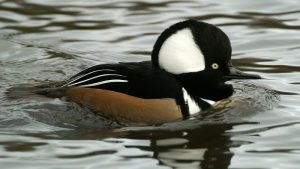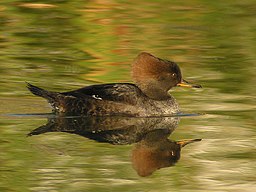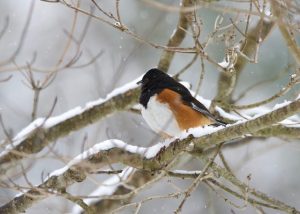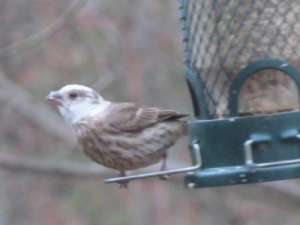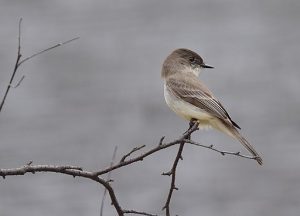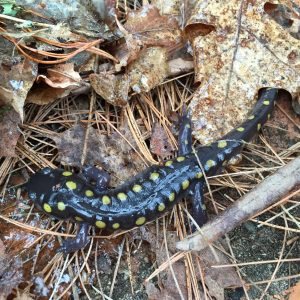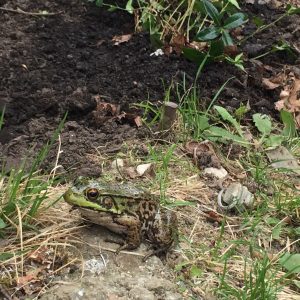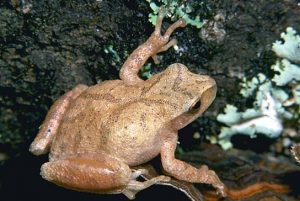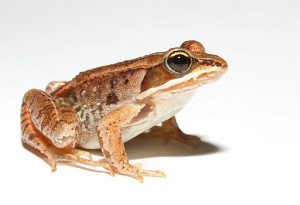Written by Gwyn Loud for the Lincoln Land Conservation Trust. She welcomes your sightings, pictures, and questions at 781-259-8690 or gwynloud555@gmail.com.
Folklore tells us, “If March comes in like a lion it will go out like a lamb.” The lion part was certainly true this year and it remains to be seen about the lamb. Overnight on March 3-4 we had the most snow (c. 16”) of the winter with bitter cold following. It appears that our local groundhog, Ms.G, was correct on February 2 in her forecast of six more weeks of winter. In spite of the weather, however, signs of the new season abound with birds singing spring songs, buds filling out on trees, and sap flowing in the sugar maples. The sap runs best when night temperatures are below freezing and daytime temperatures rise above 40℉; we had a number of those days in February.
Red-winged blackbirds returned “on schedule” in mid-February and could be heard giving their “conk-a-ree” calls from wetland habitats. With the changing season, new arrivals such as mute swans, ring-necked ducks, common mergansers and hooded mergansers are being seen on the Sudbury River. Over the next couple of weeks we can expect Eastern phoebes to arrive and to hear the nasal “peent” call of the American woodcock from meadows soon after sunset. The male woodcock does an elaborate repetitive courtship dance by first bobbing and turning in a circle and peenting. Then he flies up and circles above the meadow making a twittering sound with his wings, followed by chirping loudly while plummeting back to the same spot in the meadow where he started. Hopefully this entices a female!
Several residents who feed birds have reported seeing more Eastern bluebirds, often eating suet and doing early explorations of bird houses. These are probably bluebirds which overwintered here but soon they will be joined by bluebirds which spent the winter farther south. This is the time to get bird houses clean and ready for the newcomers. Staff at Drumlin Farm noticed an influx of white-throated sparrows after seeing none all winter and I recently had more than usual (seventeen) under our feeders. These might have been individuals starting their migration since they breed farther north. A Beaver Pond Rd. resident photographed a handsome male Eastern towhee, perhaps the same one reported from that neighborhood a few weeks ago. Another observer noticed a house finch with a white head on the bird feeder, an individual with leucism. According the the Audubon website, “ The abnormal feathers on these birds are the result of a genetic condition called leucism (pronounced LUKE-ism), which prevents pigments from reaching some—or sometimes all—of a bird’s feathers. The degree of leucism varies with a bird’s genetic makeup. But the skin and eyes remain their normal pigment and color. Albino birds are distinctly different. Albinos are entirely white with pink eyes and skin. Albinism has a different origin, too: problems with an enzyme called tyrosinase (pronounced ty-RAHS-in-ayse).” Other sources explain that leucistic birds can have problems attracting mates or being camouflaged from predators.
Barred owls continue to be reported in Lincoln. Throughout New England large numbers of these owls have been seen this winter and, sadly, many have been killed or injured on highways. One theory is that the bumper crop of acorns in the fall of 2017 led to increased numbers of small mammals such as white-footed mice, chipmunks, and squirrels, all prey of barred owls. This fine food supply resulted in a population surge of barred owls in northern New England and subsequently they have been fanning out south and east looking for prey and new territories.
A welcome spring ritual will occur soon as salamanders and frogs return to vernal pools and swamps to breed. In March or April when it is raining and above about 38℉ we may see these amphibians on the roads after dark, making it important to try to avoid driving over them. Conant Road, Lexington Road, and Silver Hill Road have well documented amphibian crossings, but it can happen anywhere close to vernal pools. Often concerned residents with flashlights and wearing reflector vests are out helping the amphibians cross safely and slowing traffic. In recent years we have not had ideal conditions for a single “Big Night” and instead the amphibians have made their journeys over several nights, and often in the middle of the night. Spring peepers chorusing from the swamps and wood frogs giving duck-like croaks from vernal pools tell us that they made the trip safely.
There have been many sightings of coyotes recently from various parts of town, perhaps because the coyotes were seeking mates in mid-February, their breeding season. Four-eight pups will be born in the den in April or May and the parents and pups will stay together until the young disperse in the fall. Eastern coyotes come in a variety of sizes and colors, from gray to blond to reddish.
Let’s hope March will go out like a lamb. but before then, we shall welcome spring when it starts officially on the vernal equinox on March 20.
© Gwyn Loud


